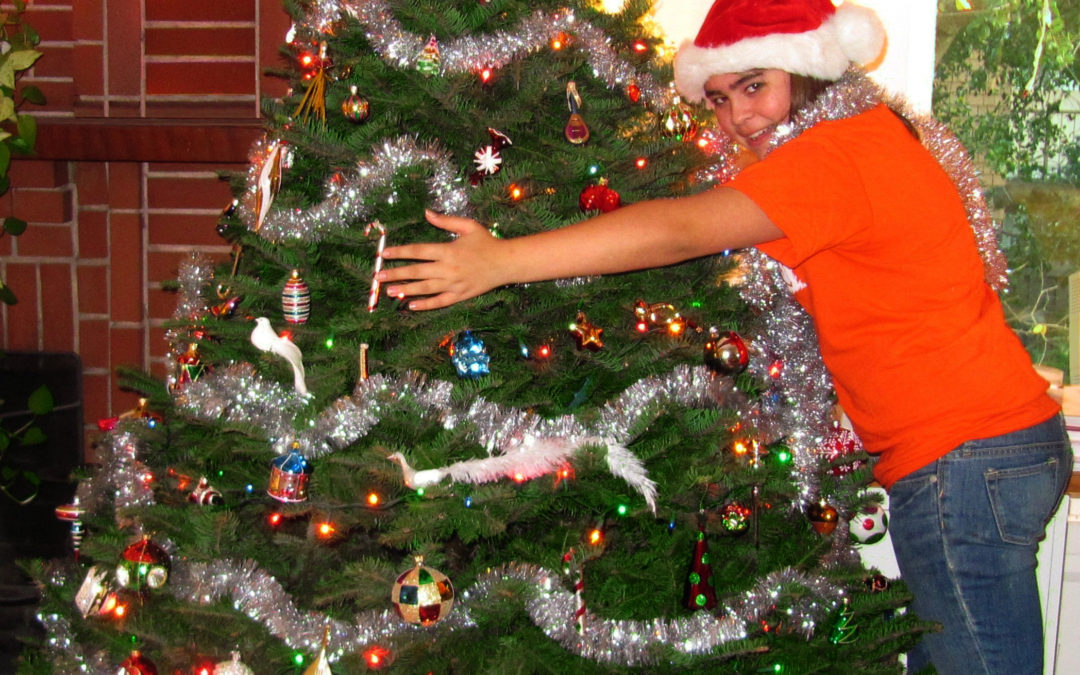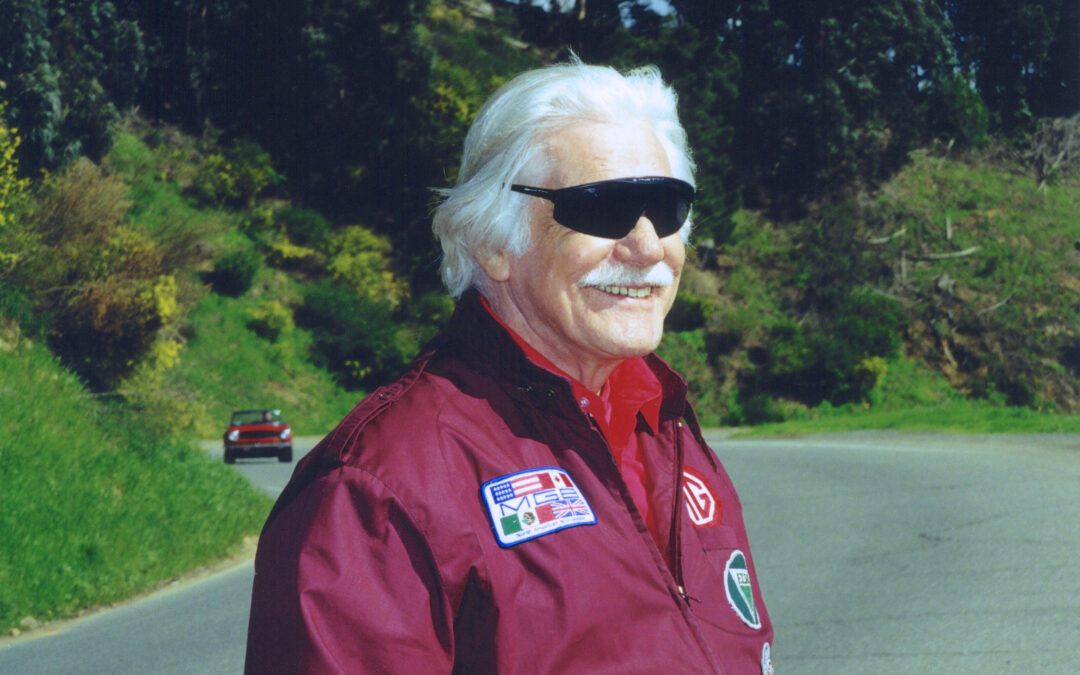US LIVIN’ THE LIFE
US LIVIN’ THE LIFE
I’ve been intending to post more activities for parents and kids to do together, so this seems like the perfect opportunity to showcase more pages from “Us, Livin’ the Life.”

One of my first gifts for Arielle was Playdough. I bought her a toy contraption that you could load wads of different colors into and squeeze them out mixed together in various shapes and sizes like noodles from a pastamaker.
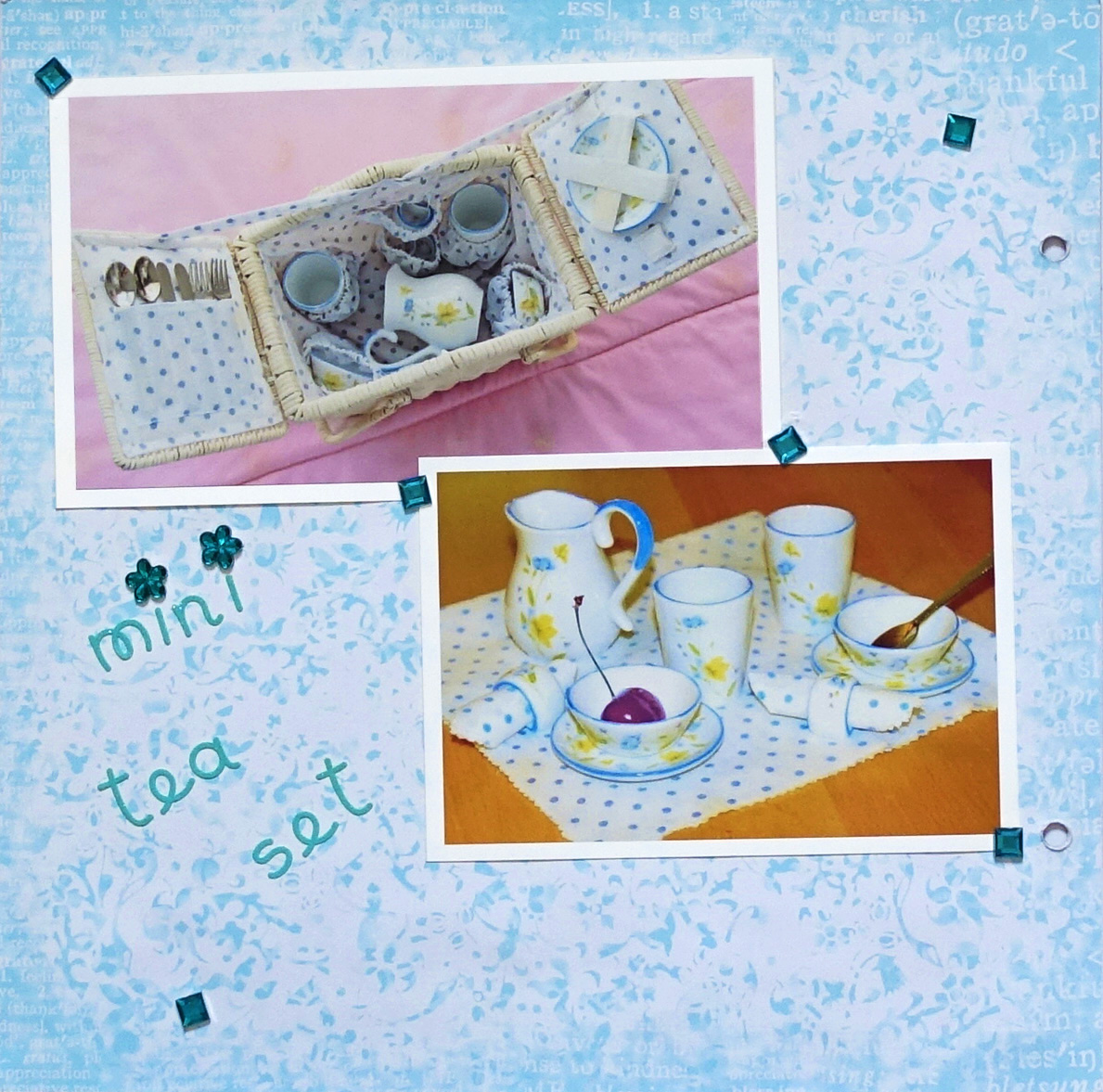
Another of my early gifts was a tea set that we used for our frequent tea parties. Whenever we had ice cream, we ate it from these bowls with the accompanying tiny spoons—it lasted longer that way.
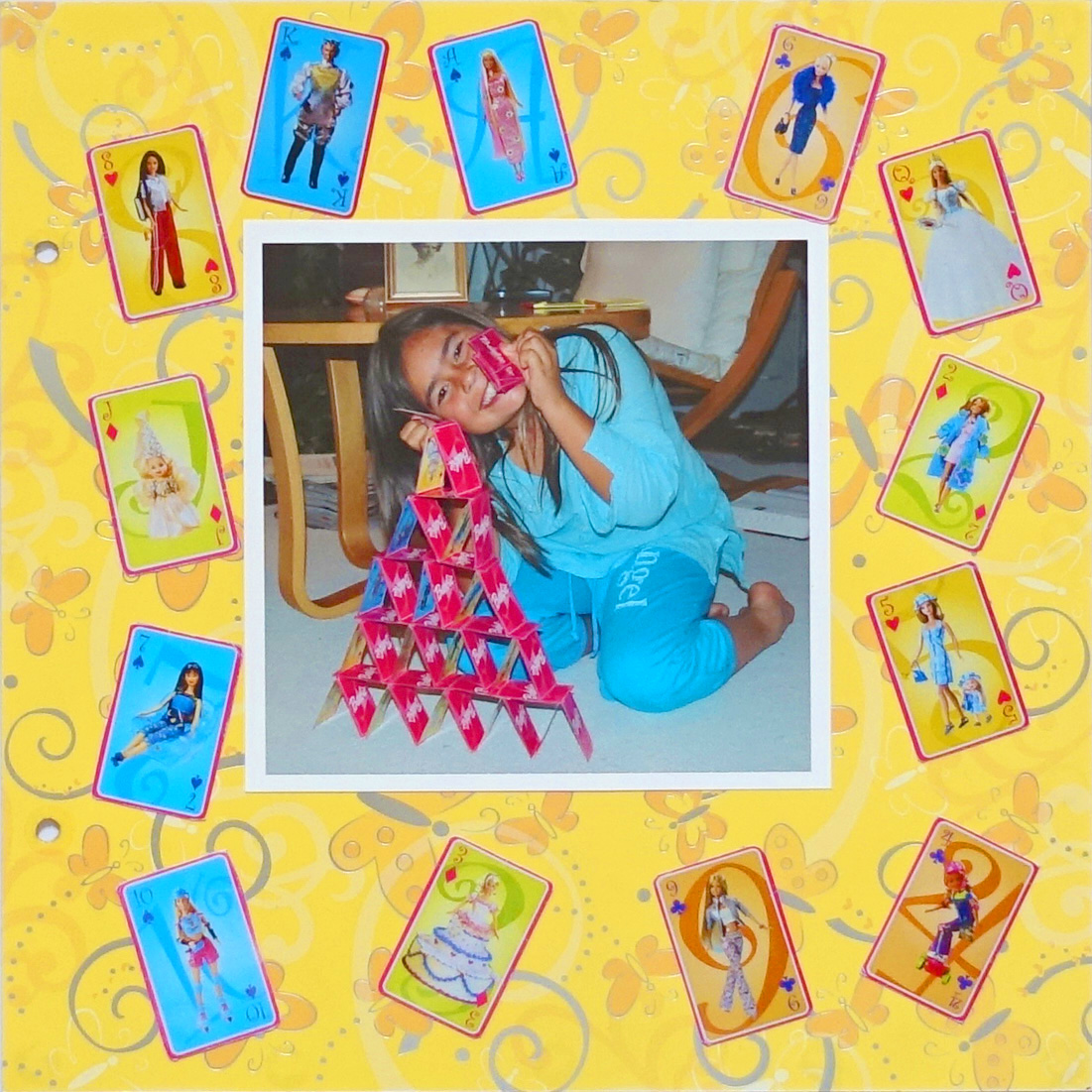
I also bought Arielle her first set of playing cards and taught her to play War, Go Fish, and Concentration. Later she would teach me B.S., Indian Poker, Texas Hold ‘Em, and Speed.
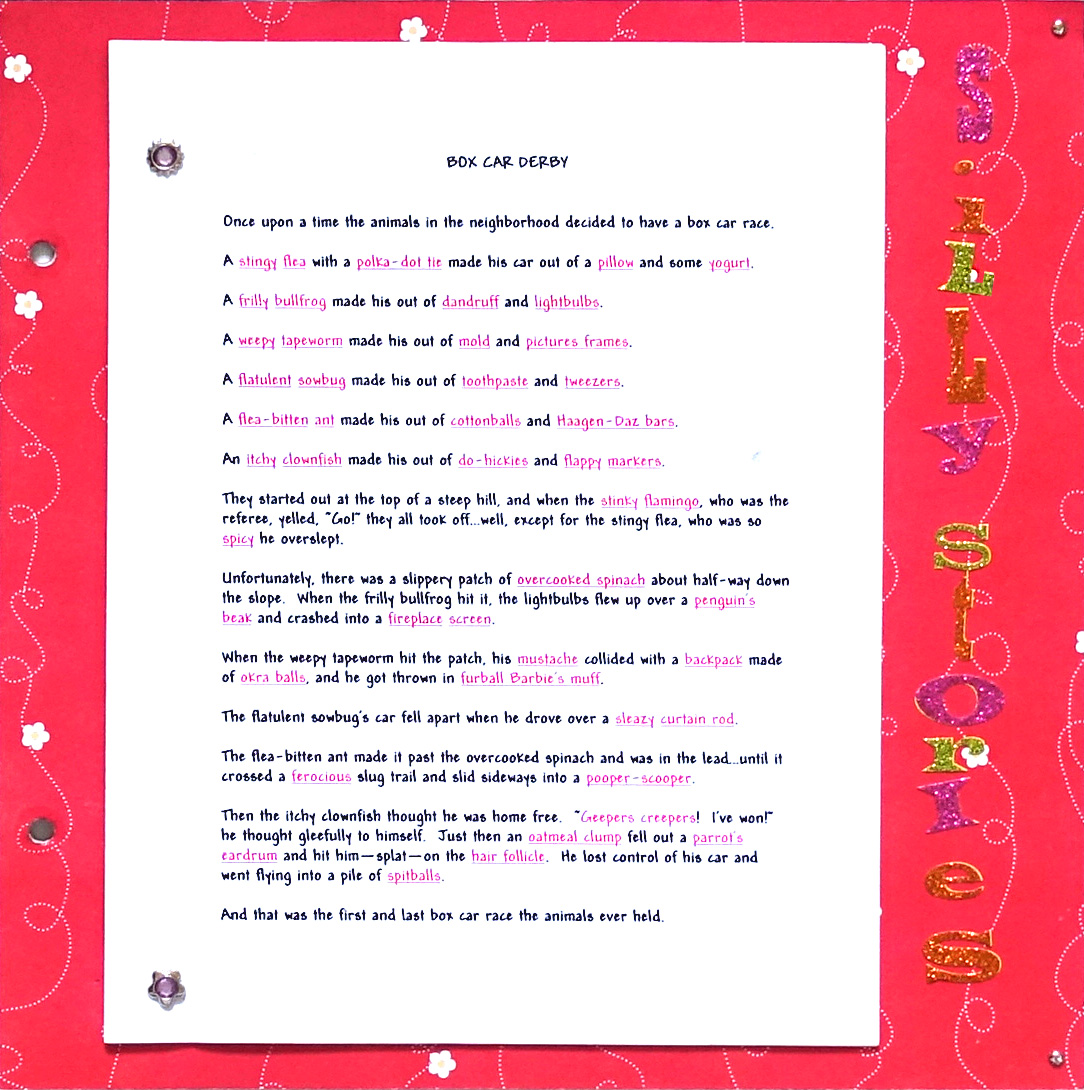
One of the pastimes that always got us belly laughing was making up Silly Stories. I would write a secret narrative with blanks for things/nouns, actions/verbs, etc. and ask Arielle and Ella to supply whatever words came to mind in the appropriate categories. Of course, they proffered the funniest words they could think of.
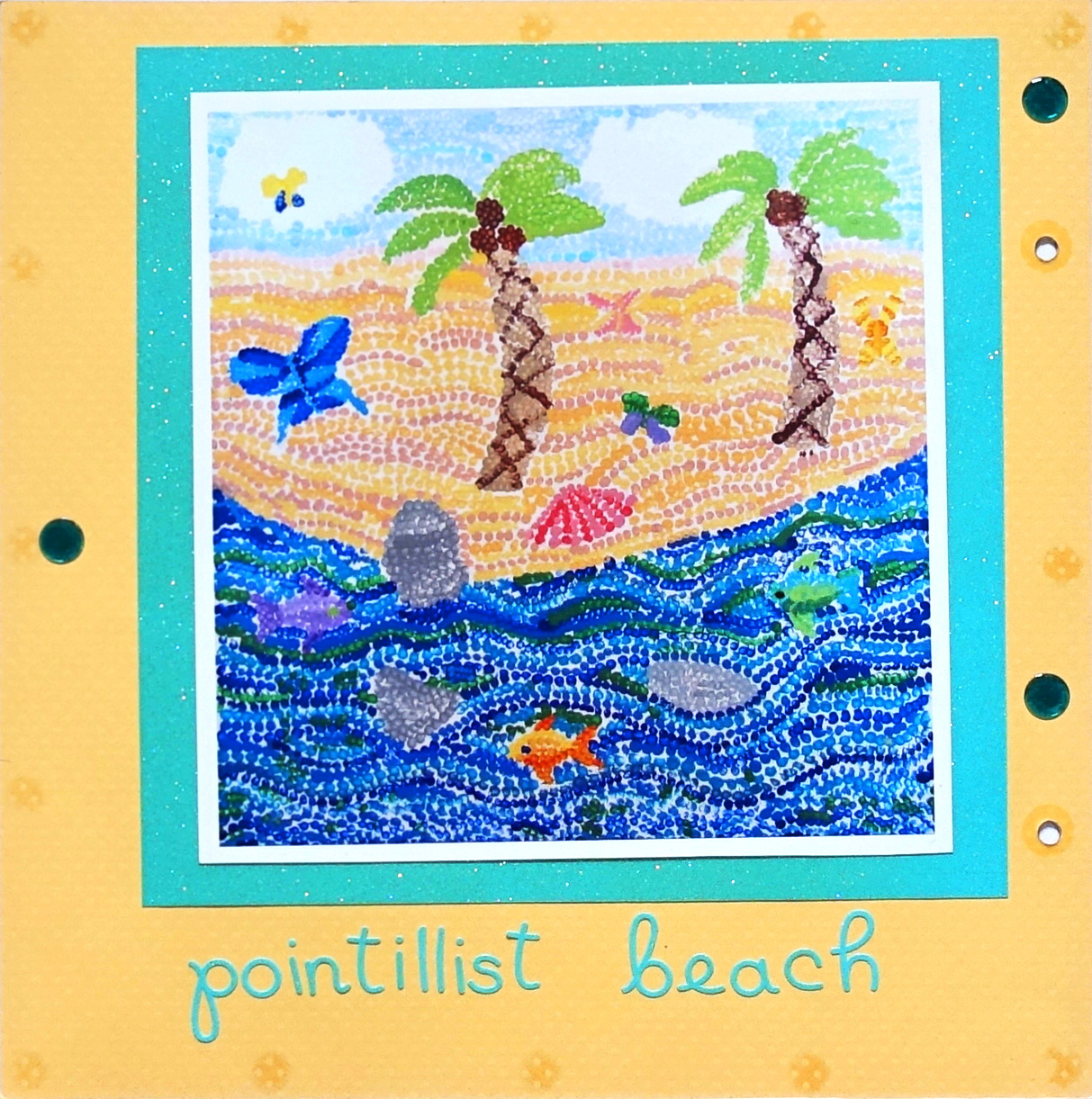
When Arielle learned about pointillism in school, she wanted us to try the technique together. She drew the outlines of the composition in light pencil, and we applied the points of color with Q-tips.
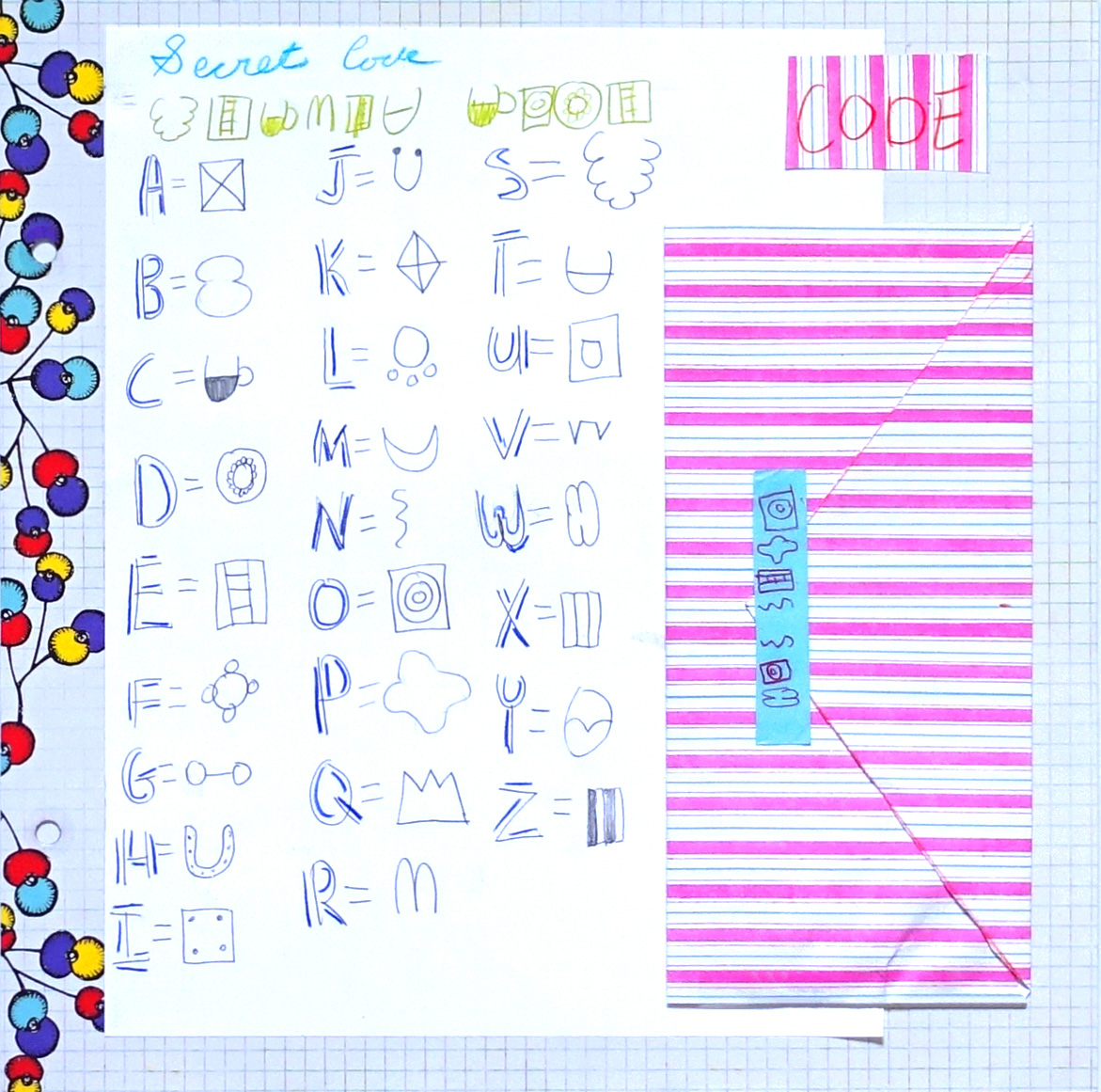
We devised a secret code and kept our messages in the envelope above.
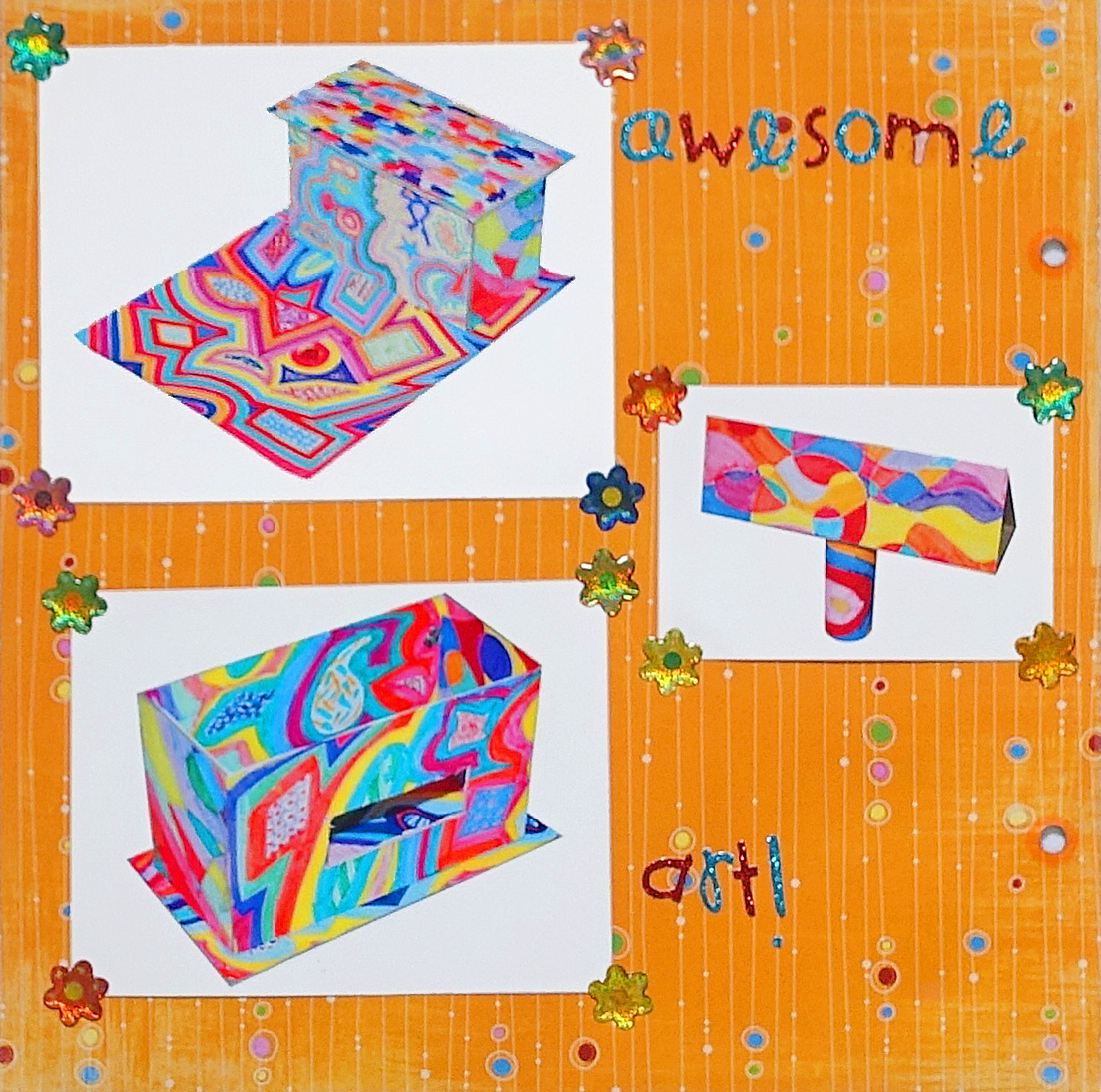
This is a technique Arielle learned in school and taught me. You start with a band of color in a corner of your paper. Then you apply another band conforming with the first while also adding more to the shape—and simply repeat the process over and over until you reach the far side of the page. You’re liable, as we were, to wind up with blank islands among all the ribs of color that you can fill in with various patterns. This is an unfinished example I found among my papers.

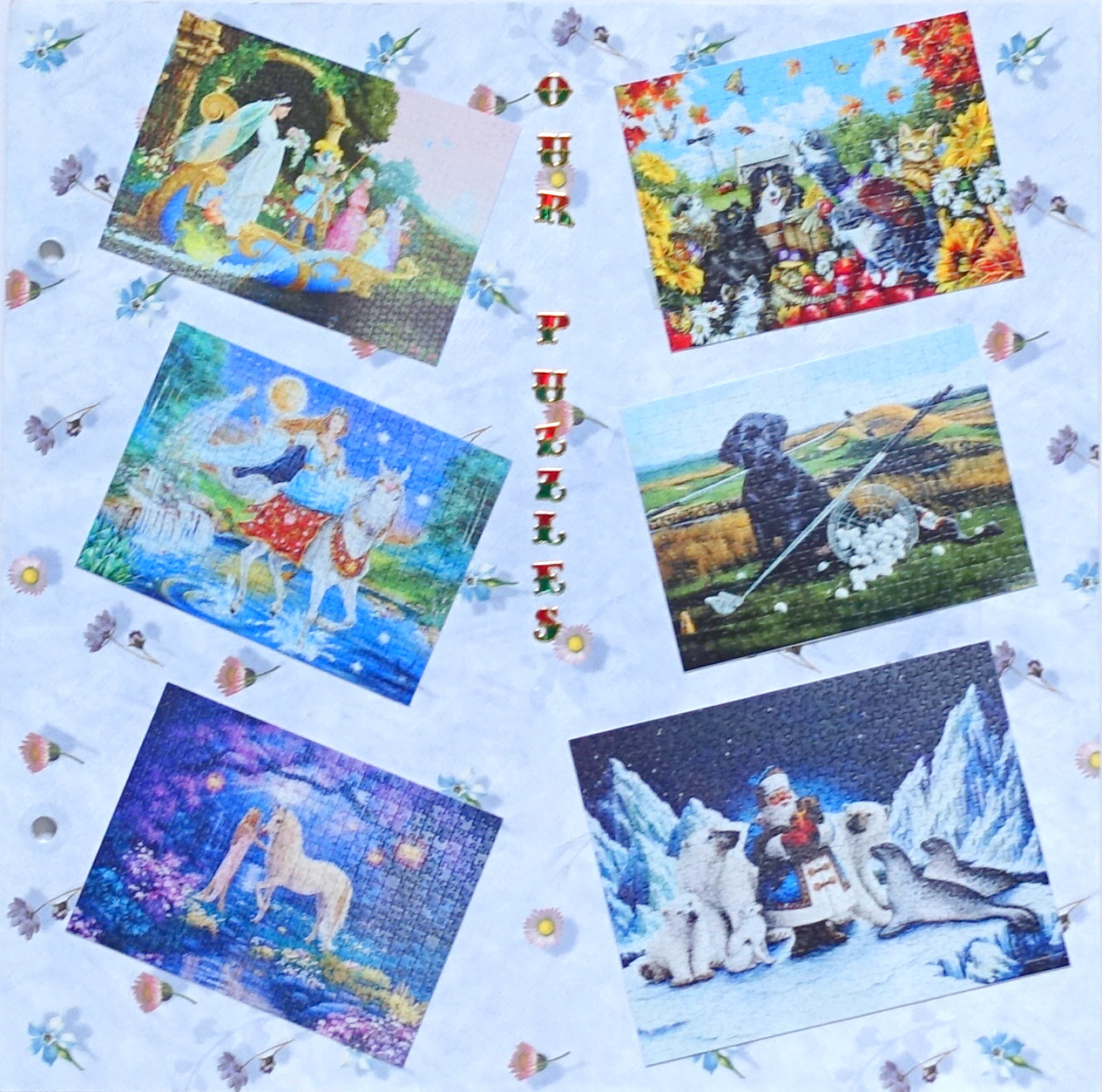
These are some of the first jigsaw puzzles Arielle and I did together. When we were finished, I would spray the back with adhesive and affix a cardboard backing so she could hang them on her bedroom walls, the ceiling, along the hall…
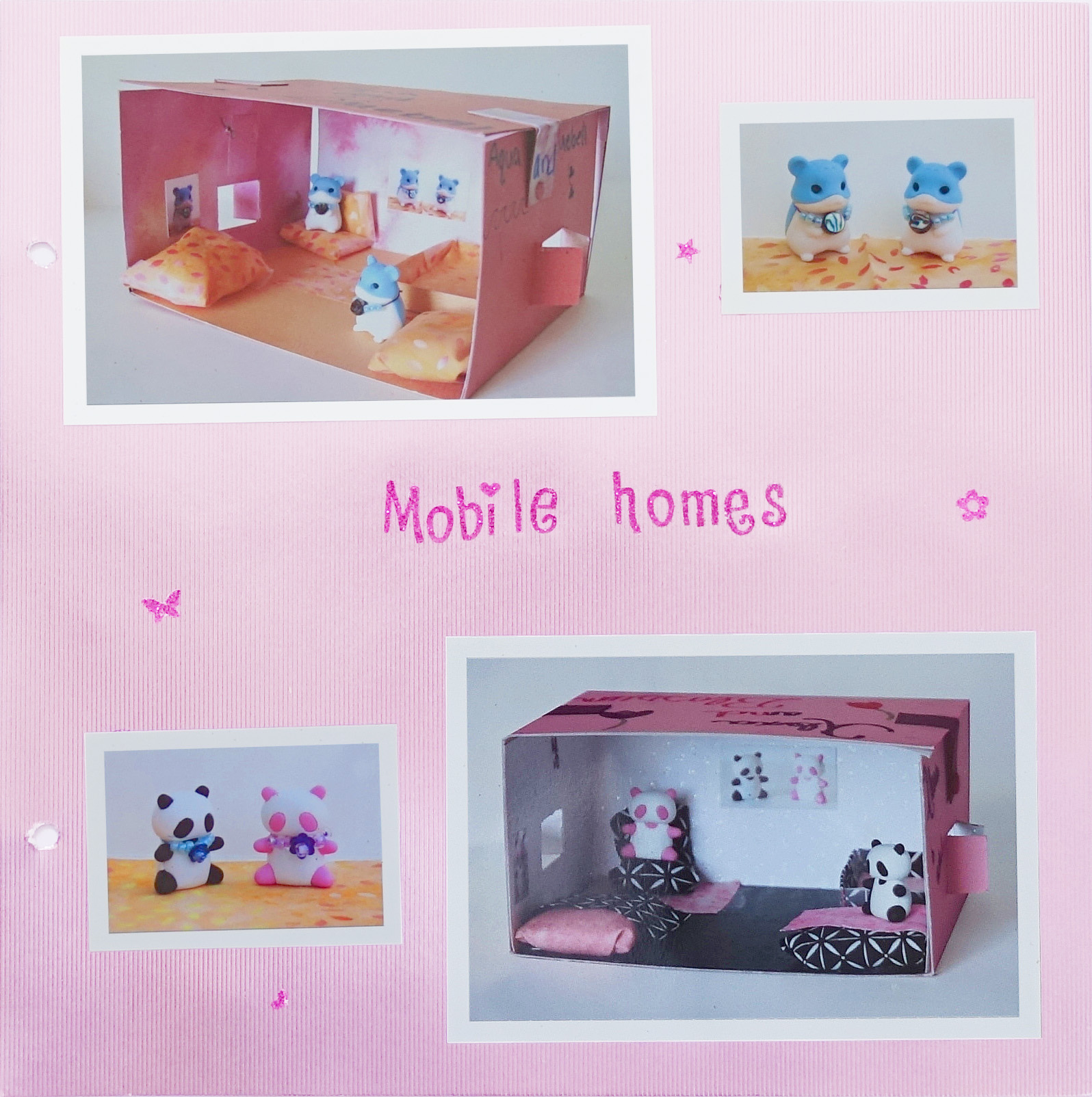
I remember the day the kids wanted me to take them to the Tokyo Fish Market to buy these animal erasers that were the rage among their cohorts. They made the diorama mobile homes themselves, using scraps from my collection of fabric swatches for doll clothes.
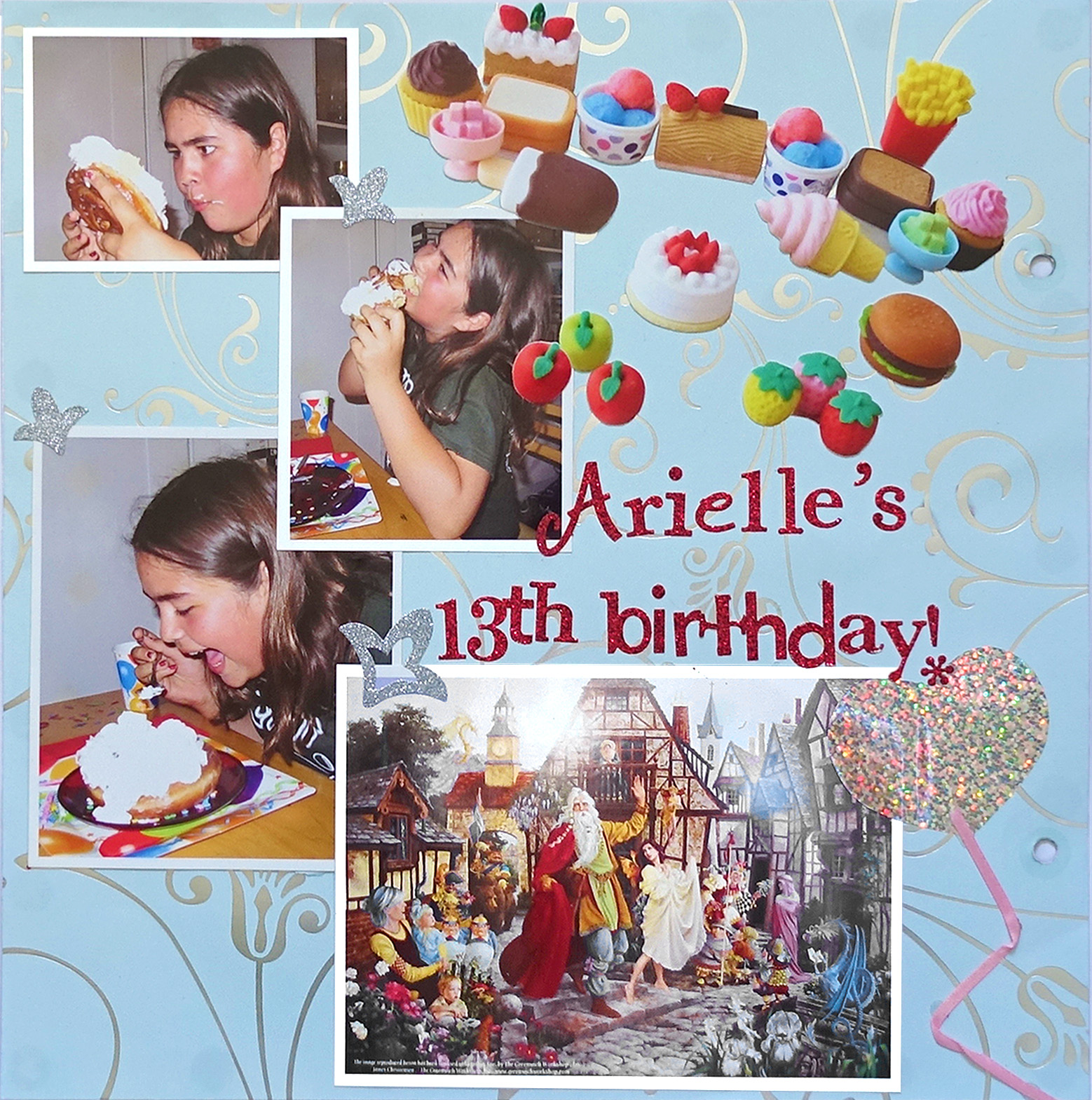
Creating a scrapbook page each year is a wonderful way for kids to commemorate their birthdays. For Arielle’s cake I always studded with candles the biggest glazed snail donut carried by Happy Donuts, her favorite treat.
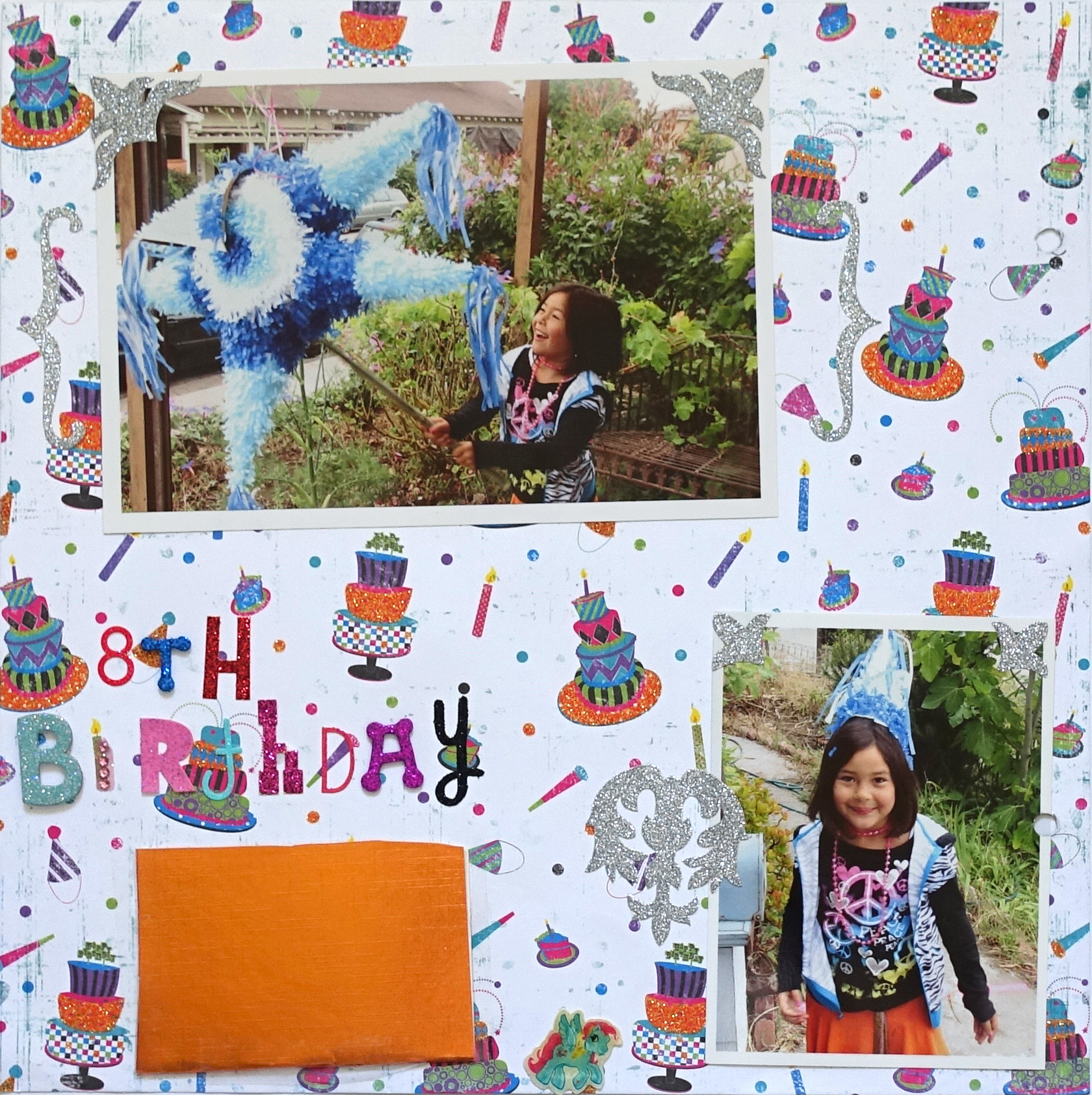
Emerald created this page for her scrapbook for her eighth birthday. After Scrapbook Territory closed, I’d periodically take the girls to Michael’s to pick out the scrapbook papers they liked the best, including birthday and holiday papers. (Right before Halloween and Christmas they have a larger selection of designs to choose from, of course.)
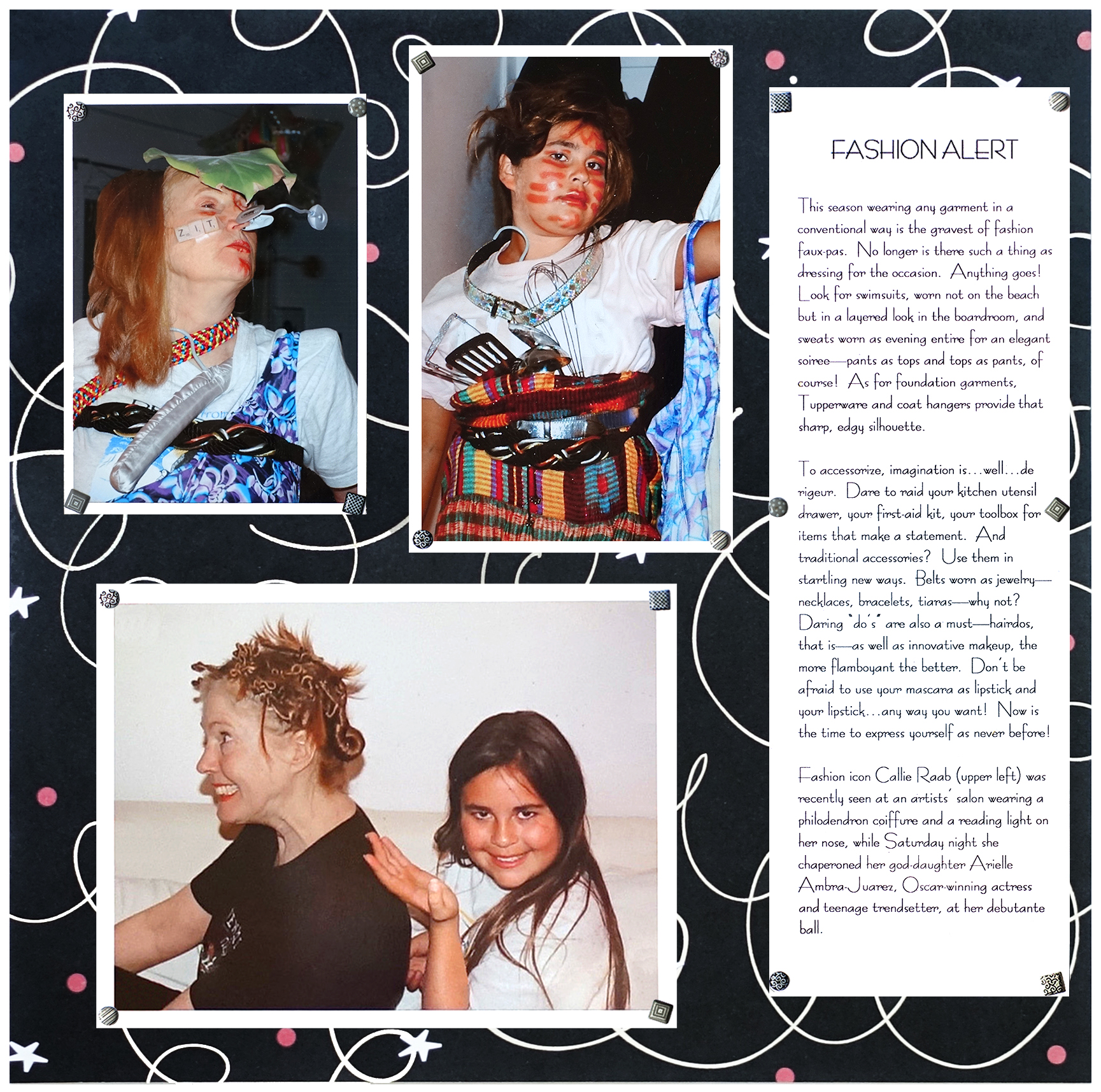
The article above, entitled FASHION ALERT, begins:
This season wearing any garment in a conventional way is the gravest of fashion faux- pas. No longer is there such a thing as dressing for the occasion. Anything goes!
Arielle and I staged more than one avant-guard fashion show. If you look closely, you’ll see I’m wearing a philodendron coiffure, a reading light on my nose, and scrabble letters on my cheek, while Arielle sports a belt necklace and swimsuit shoulder bag, accessorizing with kitchen utensils in her waistband. For undergarments, we’re both wearing Tupperware containers and coat hangers for a sharp, edgy silhouette.
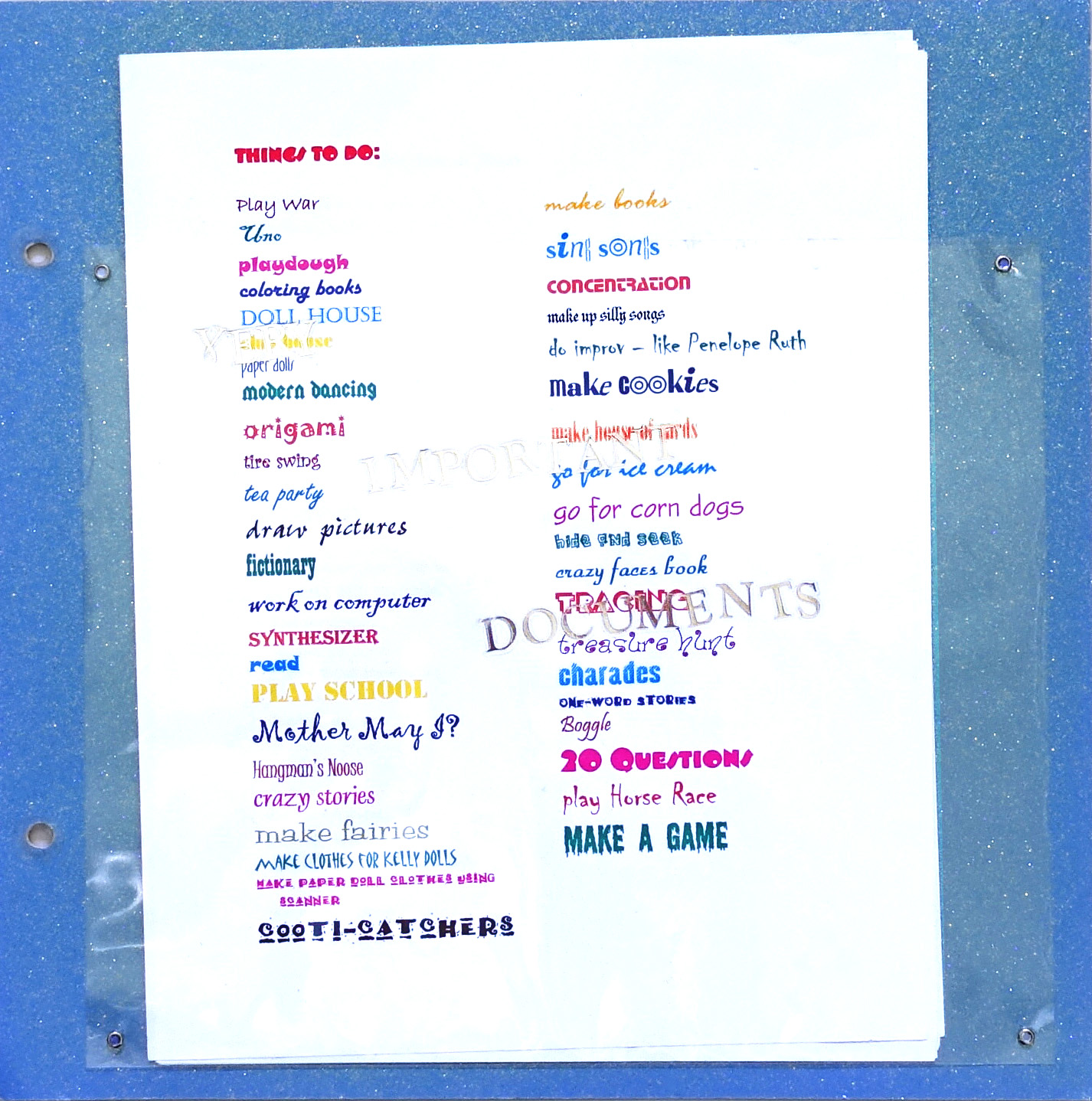
The title of this page—illegible in this scan—is Important Documents, and the one on top is a list Arielle and I compiled when she was little of all our favorite things to do together. The docs are in a clear “report cover” cut down to size and attached with brads.
